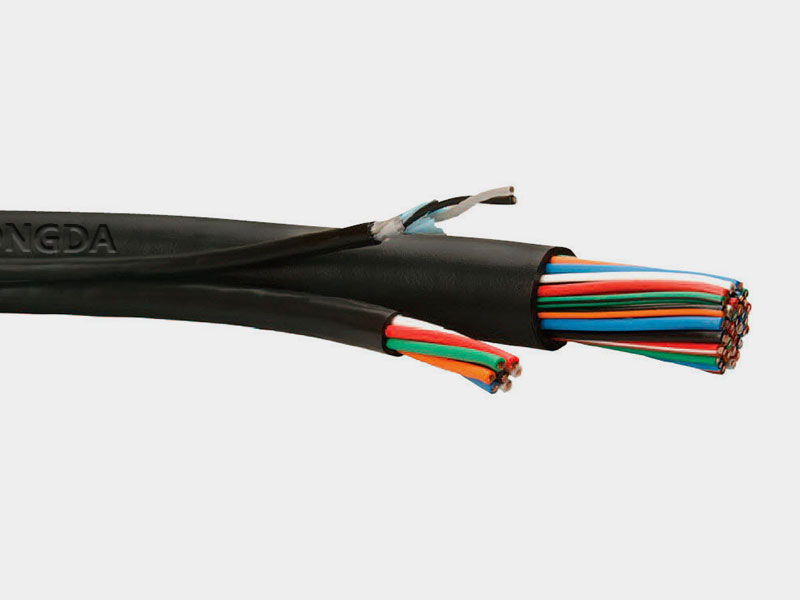
XHHW is an alphabetism or initialism which stands for "XLPE High Heat-resistant Water-resistant."
XHHW is a designation for a specific insulation material, temperature rating, and condition of use (suitable for wet locations) for electrical wire and cable.
Wires with XHHW insulation are commonly used in the alternating current (AC) electrical distribution systems of commercial, institutional, and industrial buildings and installations, usually at voltage levels (potential difference or electromotive force) ranging from 110-600 Volts.
This type of insulation is used for both copper and aluminum conductors which are either solid or stranded, depending on size.
According to Underwriters Laboratories (UL) Standard 44, XHHW insulation is suitable for use in dry locations up to 90° C (194° F), or wet locations up to 75° C (167° F).
XHHW-2 insulation, which is similar to XHHW, is suitable for use in dry or wet locations up to 90° C (194° F).
XHHW / XHHW-2 electrical conductor insulation is governed by the following Industry Standards:
? UL 44
? CSA c22.2. No38
? ASTM-B3
? ASTM-B8
? ASTM-B800
? ASTM-B801
? NFPA 70 –2008 (NEC code)
? U.S. Federal Specification J-C 30B
? NEMA WC70/ICEA S-95-658
Aluminum wiring, used in some homes from the mid-1960s to the early 1970s, is a potential fire hazard.
According to the U.S. Consumer Product Safety Commission, fires and even deaths have been reported to have been caused by this hazard.
Problems due to expansion, or more likely micro-fretting and arcing at the connectors, can cause overheating at connections between the wire and devices (switches and outlets) or at splices.
The connections can become hot enough to start a fire without ever tripping a circuit breaker!
There seem to be fewer issues with less splicing. They also make "approved" things to join them look a lot like what you were thinking of using.
In the end, though, replacing it isn't a terrible recommendation even as many many folks live with it in their homes.
I can't remember how AL and copper react together, but there may be issues over time with any junction of those metals (I can't remember) The splicer you are looking at seems to be exactly what is needed though.
Although aluminum wire smaller than 8AWG is not used in new house wiring, lots of aluminum wires are used all over North America.
The larger sizes offer excellent options for terminations since the most common termination in larger sizes is a dual-rated lug made of an aluminum alloy.
Properly terminated aluminum wiring should be regarded as safe since long-term installations have proven its reliability.
Aluminum wire is often used in residential applications for service entrance and large branch circuit loads such as ranges and air-conditioning units.